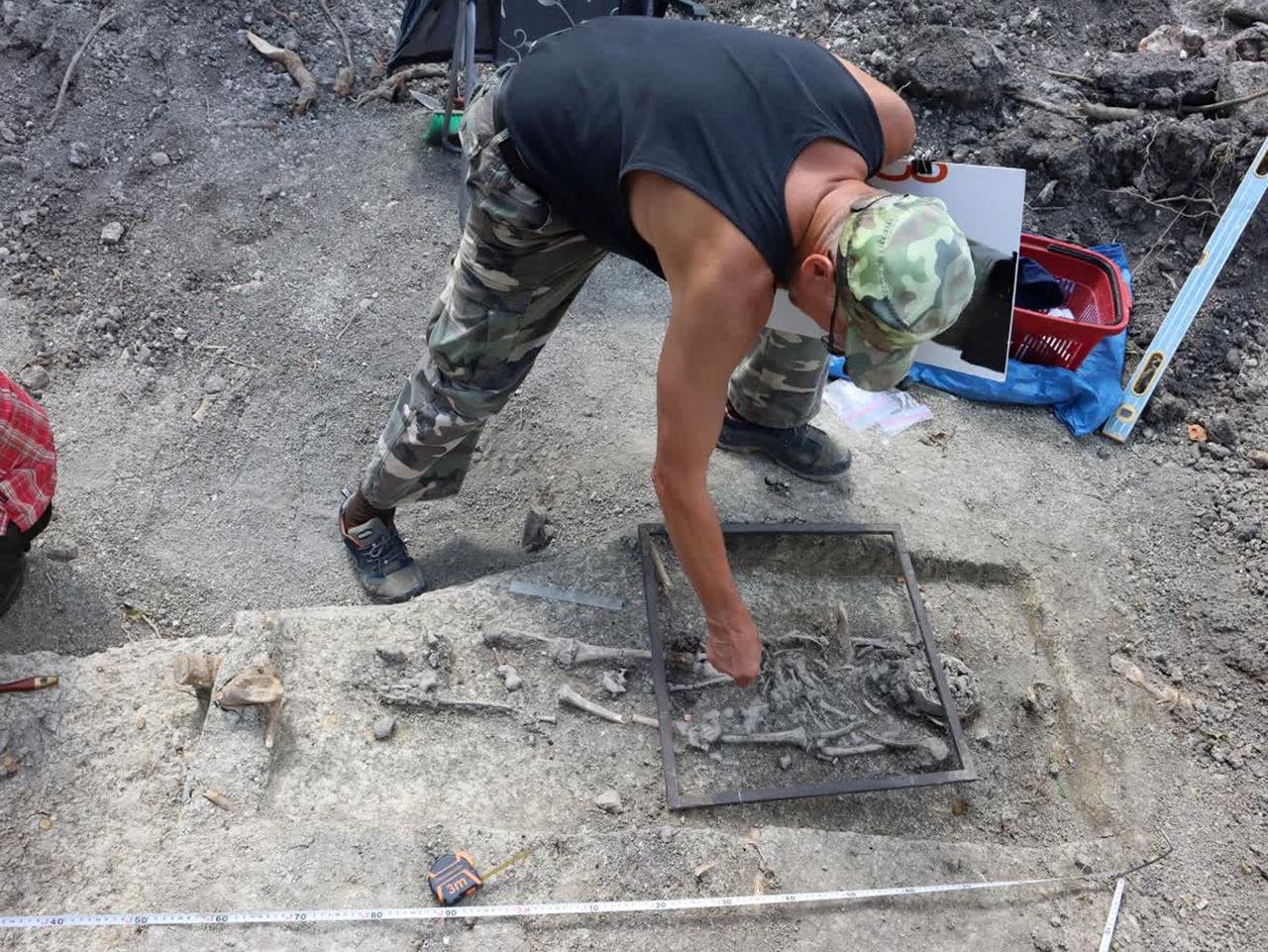In a recent archaeological excavation on Góra Chełmska in Chełm, Poland, a mysterious burial site has been uncovered, sparking renewed interest in medieval beliefs about the supernatural.
 Credit: Lublin Voivodeship Conservator of Monuments
Credit: Lublin Voivodeship Conservator of Monuments
The remains of two children, dating back to the 13th century, were found during renovation work on the fence surrounding the gardens of the former Uniate bishops’ palace, a site of historical and religious significance in the region. One of these burials has been identified as a “vampire burial,” a term used to describe specific practices intended to prevent the deceased from rising from the grave and causing harm to the living.
The excavation was led by Dr. Stanisław Gołub, an archaeologist with the Lublin Voivodeship Conservator of Monuments. His team discovered two children’s skeletons buried in an area that, according to historical records, had not previously been ᴀssociated with any known cemetery. The remains were uncovered while workers were removing tree roots as part of the renovation project.
What sets this discovery apart is the unusual treatment of one of the skeletons. Dr. Gołub explained that the skull of the child had been intentionally separated from the body and placed face-down in the grave. Heavy stones were also positioned on the torso. These practices are consistent with anti-vampire rituals found in various parts of medieval Europe, particularly in Eastern Europe, where folklore about vampires and revenants—reanimated corpses—was prevalent.
According to Dr. Gołub, such measures were believed to prevent the deceased from returning as malevolent spirits or vampires. “The burial clearly shows signs of anti-vampire practices, which were aimed at stopping the ᴅᴇᴀᴅ from rising again,” he said in a statement.
The discovery of postholes at the burial site, which likely served as grave markers, further supports the notion that this was a special or monitored grave. In similar cases across Poland, markers were used to observe the graves for any signs of reanimation. For example, a previous discovery in Pień revealed a woman buried with a padlock on her toe and a scythe across her throat—further examples of the lengths to which medieval communities went to prevent the “unᴅᴇᴀᴅ” from returning.
The burials were found in gypsum soil and oriented along an east-west axis, a common burial practice of the time. No coffins or funerary items were discovered, which adds to the mystery of why these children were buried in such a way in an area not designated as a cemetery. According to the Lublin Provincial Conservator of Monuments, this site was part of a cathedral complex, but the presence of these graves raises questions about whether an undocumented burial ground once existed there.
Chełm, a city rich in Byzantine and Slavic cultural influences, was a religious and administrative center during the Middle Ages. Góra Chełmska, where the discovery was made, was home to fortifications and religious buildings but had no known cemetery, making the find even more significant. Archaeologists believe the remains date to the 13th century, based on the stratigraphy of the site and nearby pottery fragments.
The broader implications of this discovery are profound. Anti-vampire burials reflect deeply rooted fears in medieval society about the supernatural. It was widely believed in some Eastern European cultures that certain people, after death, could return as vampires, threatening the living by spreading disease or feeding on their blood. Such beliefs were often linked to those who had died under unusual or suspicious circumstances, such as suicides or individuals believed to have been possessed by malevolent spirits.
Researchers hope to gain more information about burial practices and living conditions at the time. This find adds to the body of evidence from archaeological excavations across Eastern Europe, documenting the widespread fear of vampires and the lengths to which communities went to protect themselves from the perceived threat of the unᴅᴇᴀᴅ.
Lublin Voivodeship Conservator of Monuments





